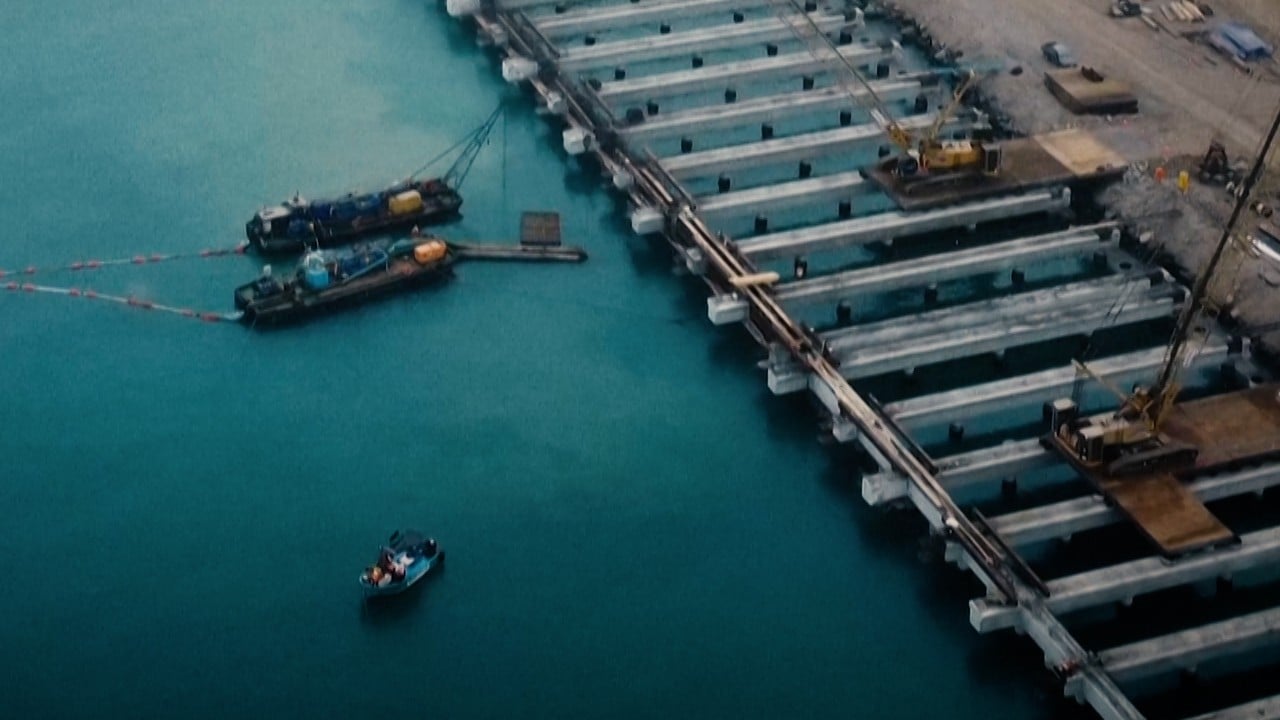Opinion | Asia is lagging behind Europe in the transition to green shipping
The shipping industry is preparing for the (melting) iceberg ahead: the International Maritime Organization recently set a more ambitious target to reduce greenhouse gas emissions to net zero by around 2050. At the same time, 13 of the world’s 30 largest shipping companies have committed to net zero between 2040 and 2060. But not all companies are going full speed ahead.
Though Asian companies account for half of global vessel tonnage, European companies have made more progress in defining decarbonisation goals and establishing fleet-renewal projects. These companies are likely to be best-positioned to meet the rising demand for clean transport, and therefore to have more carbon pricing power over those that are lagging behind. But climate change is a global crisis, and every company needs to get on board.
After all, decarbonising the shipping industry is a race against time that requires massive investment, whether it is buying new vessels equipped with cutting-edge technologies and next-generation engines, installing scrubbers or retrofitting engines.
Considering that the volume of goods transported by sea is growing, and assuming around half of existing container ships will need to be renewed or retrofitted by mid-century, we calculate that the shipping industry will have to invest a minimum of US$23 billion per year to achieve its climate targets.
In 2022, an exceptional year for the industry, the 30 largest companies recorded around US$165 billion in free cash flow, which means they should be able to afford the transition until 2030 without external financing.
But, after that, it will require more international cooperation to raise and redistribute both financial resources and know-how for shipping decarbonisation, especially considering that less-developed countries have the oldest fleets in the world (27.9 years versus the global average of 21.9), and can’t bear the costs of going green on their own.
World can’t afford pollution from massive cruise ships
World can’t afford pollution from massive cruise ships
The concentration of shipbuilding know-how and engineering capacity in Asia is another risk to consider. China, South Korea and Japan manufacture 98 per cent of global container ship capacity.
While they have taken the lead in developing zero-emission vessels and the associated infrastructure, surging demand from cruise liners and governments expanding their naval budgets has pushed new orders to record highs, further increasing construction and delivery times, as today’s vessels are more complex to manufacture. This could create production bottlenecks and slow decarbonisation plans.
Besides renewing the global fleet, the shipping industry also needs to accelerate its shift away from fossil fuels, which accounted for 94 per cent of fuel consumption last year. The shift to net zero will depend on increasing the use of alternative fuels, including biofuels, methanol and hydrogen.
As of 2022, biofuels accounted for less than 0.5 per cent of shipping energy demand. But the share of low-emission fuels – particularly methanol – will need to reach nearly 15 per cent of total energy demand by 2030. While over 100 infrastructure projects for the integration of ammonia and hydrogen are under way, more technical advancements and policy support are still needed.
Meanwhile, while methanol has gained a lot of interest as a marine fuel, and ports around the world have been working to make it available, for the moment such projects are mainly found in China, Australia, the Middle East and Europe. This means that only companies operating in these geographies have access to alternative fuels.
Infrastructure is the last piece of the puzzle. Green shipping corridors are being established along busy routes – such as the one between Los Angeles and Shanghai – and ports are being transformed into energy hubs to promote zero-emission technologies. But there is a long road ahead to ensuring everywhere has sufficient electricity for berthed passenger and container vessels, while also meeting the demand for decarbonised gases, such as biomethane liquified natural gas.
If the EU’s mechanism encourages carbon pricing policies in less-developed countries, it could significantly lower the carbon intensities of exports, which could put some extra wind in the sails of the industry’s green transition.
Ludovic Subran is the chief economist of Allianz




 Bonus up to 10000 Rupees
Bonus up to 10000 Rupees